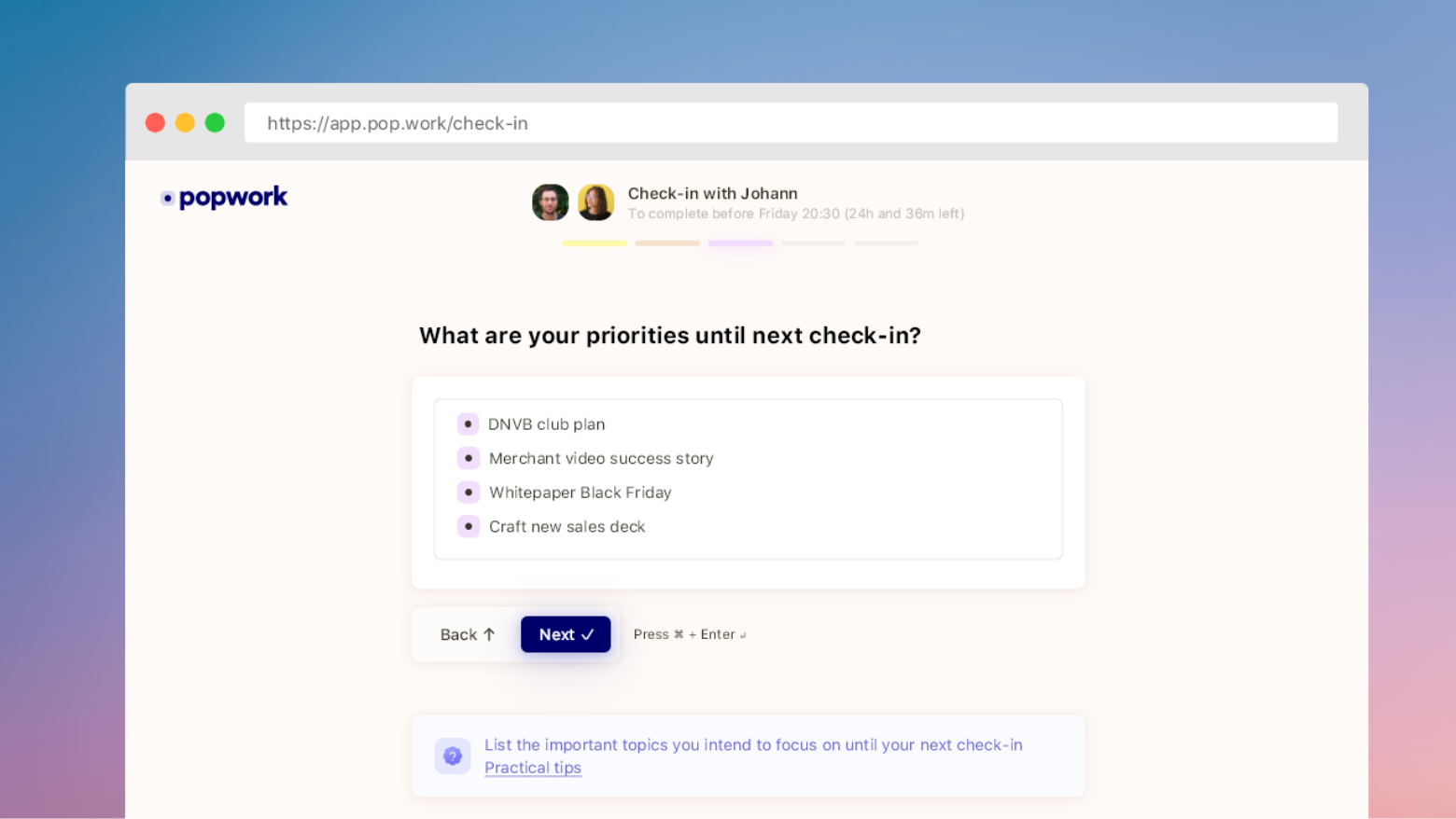There are moments in the year that are more important than others; the month of September is one of them. Going back to work after the summer break is a crucial period for teams. The way you and your team will perform until the end of the year largely depends on how you kick off the month of September. Summer holidays are important to allow everyone to recharge their batteries before tackling the last months of the year, which are traditionally very busy.
Nevertheless, if your back to work plan is poorly prepared and organized, there is a risk of inertia within the team and precious weeks can be lost, which can prevent you from reaching your annual objectives. More than ever, managers play a critical role in getting off to the right start for the last months of the year as well as correctly managing priorities and team members.
So, how can you get off to a great start after the summer break and make sure your team reaches their objectives? As always with team management, there is no secret recipe and you should focus on the four main missions of every manager:
- Set a clear set of objectives
- Provide continuous support to your team members
- Facilitate collaboration and teamwork
- Develop and coach each team member
Step 1: Set the right goals for the September-December period
The difficult period we are going through creates uncertainty and lack of visibility. That's all the more reason to plan and track your team's goals through the end of the year! Otherwise, you will get lost, lose track and most likely not reach your 2021 objectives.
Goal setting is a particularly important moment for your team. As a manager, setting or refreshing your team's objectives in September will allow you to measure the progress of these goals both individually and collectively and increase your chances of achieving them.
Whether you use the OKR or SMART methodology, whether they are top-down or bottom-up, these objectives will serve as a guideline for your team until December. Without a clear objective, it is impossible to move forward efficiently, but don't forget that pursuing a poorly defined objective can be more conterproductive than having no objective at all! Make sure that these objectives are the result of mutual buy-in with each of your team members. This will allow you to give each member of your team consistent and achievable objectives.

Once these goals are set in September, our recommendation is to have at least one review and progress update before the end of the year - ideally once a month. Otherwise, you may have bad surprises at the end of the year and discover once it's too late that these objectives were not met.
Step 2: Set up the right management rituals until the end of the year
Effective management relies on planned and recurring rituals. Clearly organizing and planning your management rituals until the end of the year helps you stay in control and creates the conditions for effective team management.
On a regular basis, getting in sync with your employees will play a crucial role in achieving their goals. Starting in September and until the rest of the year, it is important to schedule weekly or bi-monthly check-ins with each team member. These 30-minute one-to-one meetings will allow you to regularly assess the mood and workload of the team, to stay aligned on the right priorities, to identify possible roadblocks and provide continuous support. They will be the foundation of your team management.
Prepare these 1:1 meetings so that they are effective and trigger a meaningful conversation. To do so, use the "check-in" method by asking open yet specific questions before each weekly meeting: "What are you proud of in the last few weeks?", "What roadblocks or challenges are you facing?” This ritual allows each week to surface the important topics and address them efficiently. At the end of each 1:1 meeting, define next steps and follow up: this is how you will make sure things move forward week after week. The Popwork solution can help you to set up and run these rituals very easily.

In addition to your one-to-one discussions, you can also rely on productivity techniques to help your team move forward efficiently. The Eisenhower Matrix, for example, is a technique created in the late 1980s that ranks tasks upon their level of urgency and importance and helps you prioritize work and focus your efforts on what really matters:
- Important and urgent tasks: to be executed immediately
- Important but not urgent tasks: to be planned
- Urgent but unimportant tasks: delegate
- Tasks of little urgency and little importance: to be abandoned

Step 3: Facilitate collaboration and teamwork
In addition to the direct relationship with each of your team members, you need to create a good collective dynamic if you want to get off to a strong start in September and reach your end-of-year objectives. To unite and stimulate your team, it is important to clearly articulate your ambition and share your long-term vision. Team members are more aligned and motivated when they feel that their missions are meaningful.
We recommend that you set up a team meeting every week or two. The format of this meeting can be adjusted according to your needs and the profile of your team: it can be a quick stand-up meeting, a round-table discussion of the priorities of each team member, or a more traditional meeting.
This regular team forum is essential to align and coordinate everyone's work. It is also an important moment to create solidarity and to encourage collaboration and teamwork. With active listening and benevolence, these meetings will also allow you to identify possible issues, to generate new ideas and to strengthen the relationships within the team.
Step 4: Coach and develop your team members
Your role as a manager, especially in these times of pandemic, is also to help your team members grow as professionals and individuals.
The first thing you need to do is to give feedback, starting in the first days of September. By sharing constructive and qualitative feedback, you stimulate the performance and motivation of your team and contribute to the personal development of each team member. This is what will help the team to progress and achieve its goals.
Nevertheless, giving feedback cannot be improvised, so here are some tips:
- Give feedback as often as possible
- Be specific, use simple words
- Focus and leverage on strengths
- Do not avoid problems but keep a constructive mindset
- Make team members react and listen actively
- Ensure that the feedback is understood
- Identify opportunities to put feedback into practice
Finally, don't hesitate to coach your employees during these last months of the year. By investing in the development of your employees, you will help them reach their full potential. Show empathy and benevolence to give your team confidence and empower them.
When it comes to coaching, don't improvise and rely on proven methods such as the GROW model and its four steps:
- Goal: The first step in coaching is to define what you want to get out of it. For example, as a manager, you might start the discussion by asking "What would you like to get out of our conversation?"
- Reality: Once the goal is established, ask the team member to describe their current situation. If you miss the starting point, you will not achieve the goal or solve the problem. By encouraging the team member to describe the reality objectively, finding the solution becomes easier.
- Options: Team members often think they are stuck - and wrongly so. Your role as a manager is to help them go beyond this and identify new solutions. Don't be afraid to ask open-ended or even naive questions to see things from a new perspective.
- Will: A good coaching must finally lead team members to take concrete actions in order to reach their objective or overcome their challenges. You must help each member of the team to have a concrete action plan and then follow up together.

Define the right objectives, set up regular management rituals, facilitate team collaboration and position yourself as a coach: by following these four steps, you will get off to a strong start in September and achieve your objectives at the end of the year! With these simple actions and the right mindset, the back-to-school period will be a defining moment for you and your team.

